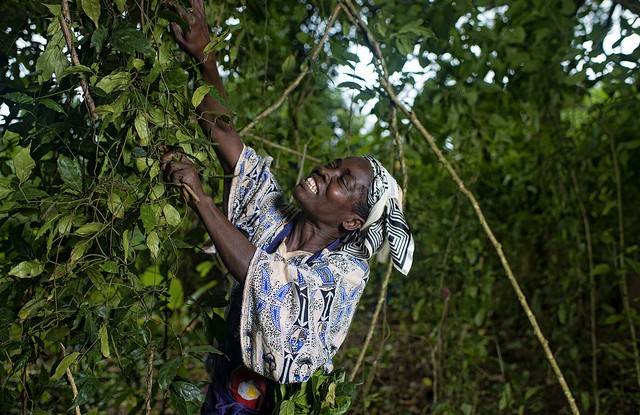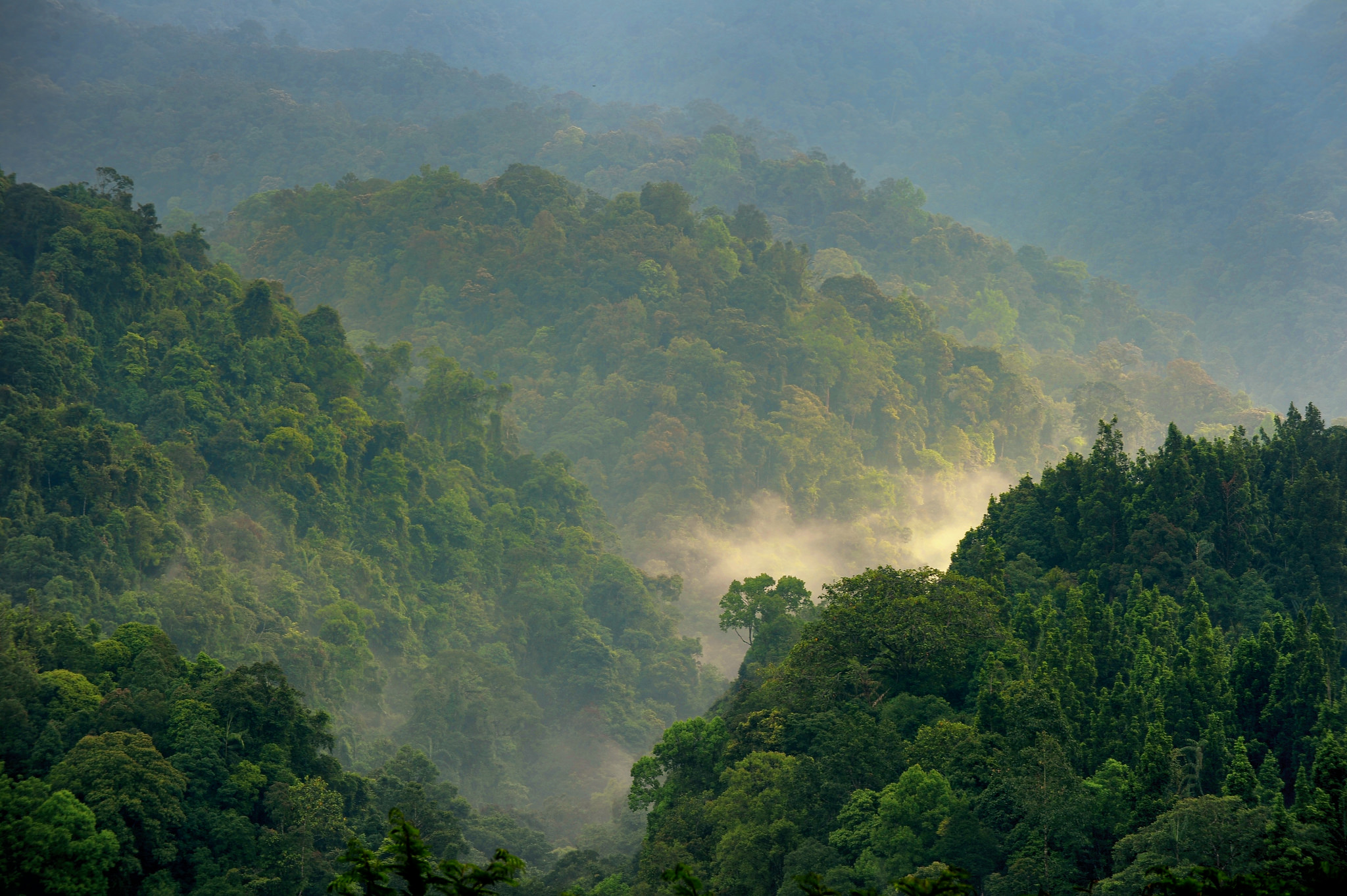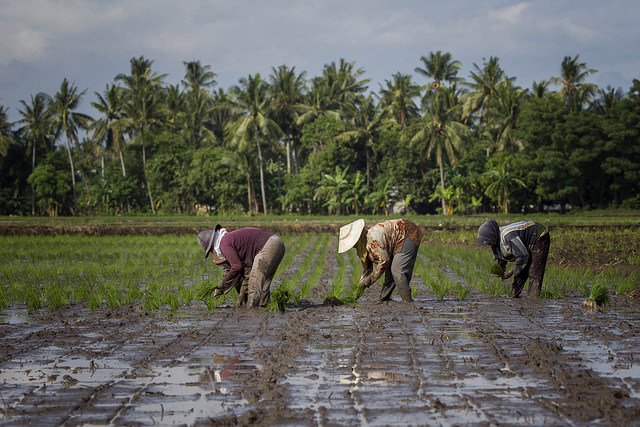
To mark the Day’s sixth anniversary, Peter Holmgren, Director General of the Center for International Forestry Research (CIFOR) and Tony Simons, Director General of the World Agroforestry Center (ICRAF), sit down together in a special three-part video interview series to discuss the challenges and opportunities that lie ahead for forests and for our planet.
In November 2012 the United Nations General Assembly proclaimed 21 March the International Day of Forests. The Day provides an annual platform to raise awareness on the importance of forests and trees and the myriad ways in which they sustain our livelihoods.
Below is a transcript of Part 3 in our special three-part TV interview series.
This final segment discusses the CGIAR Research Program on Forests, Trees and Agroforestry (FTA), which was started in 2011 and will be entering its second phase in 2017.
The program is being supported by six research centers: CIFOR, ICRAF, Bioversity International, the Tropical Agricultural Research and Higher Education Center (CATIE), the International Center for Tropical Agriculture (CIAT), and the Agricultural Research for Development (CIRAD). With over 230 researchers working in more than 35 countries across Asia, Africa and Latin America, the FTA program responds to the urgent need for a strong and sustained research focus on the management of forests and trees.
Trees on farms and in forests play a crucial role in confronting some of the most important challenges of our time: reducing poverty, improving food security and nutrition, and protecting our environment. They are also important in sustaining ecosystem services like clean water and biodiversity conservation.
A conversation with the Directors General of two CGIAR centers
Part 3: The CGIAR Research Program on Forests, Trees and Agroforestry (FTA)
CIFOR and ICRAF are two of the 15 research centers that comprise CGIAR – the only worldwide partnership addressing agricultural research for development whose work contributes to the global effort to tackle poverty, hunger and environmental degradation.
Adinda Hasan, Communications Specialist for Asia, CIFOR
Why did the CGIAR see the need to add a focus on natural resources in the 1980s?
Tony Simons, Director-General, World Agroforestry Center (ICRAF)
The CGIAR was very successful since its establishment in 1971 following a Bellagio meeting around the need to boost the world’s food’s production. We saw through that Green Revolution a lot of emphasis on improved varieties and improved cropping systems, but that was not the full solution. There was a lot of draw-down on natural capital.
So we recorded the revenue from increased cereal production, but not the negative cost to the environment. And that was why it was very important to bring in that environmental dimension and ecosystems services. Probably the biggest win for the world was the establishment of CIFOR in 1993 to help strengthen that within the CGIAR.
Peter Holmgren, Director-General, CIFOR
We live in a transition of times. In the 1970s, food production was the main agenda item for the CGIAR. Since then, we’ve seen the development of the political arena, development of the objectives on all levels. We see a lot more of the social and environmental aspects coming in, just as it does as it does with sustainable development.
Hasan:
So both your centers have played key roles in the program on Trees, Forests and Agroforestry. You’ve just finished your first phase. How did that go? Can you tell us about the key challenges and the main achievements?
Holmgren:
Well, this year is the final year of the first phase. We haven’t quite finished it yet, but CIFOR and ICRAF are the largest contributors to the program on Forests, Trees and Agroforestry.
We’re now moving into a second phase. We are currently working on the planning of that. The new phase of the Forests, Trees and Agroforestry program will start in 2017. We will add new partners. We will develop our work, our agenda, our objectives further. We will streamline and focus on our theory of change to make a difference along the lines that we’ve discussed here today. It’s really about the partnership. It’s really about the interests of stakeholders around the world to invest in this program.
Simons:
It’s a fascinatingly exciting program because it’s been operational for six years. And we’ve achieved more as two centers working together than we have probably in the previous decade.
That has brought excitement to the scientists; it brought operational realities on the ground. It was about co-location, co-design, co-investment and co-attribution and recognition of the outputs of that. To do what? To accelerate impact in those environments in which we work.
Holmgren:
As I see it, and I know we share this view, research capacity development and engagement is integrated in development and our efforts. CIFOR envisions a more equitable world where forests and trees contribute to the livelihoods, to the well-being and to a sustainable environment for all.
Simons:
A great focus in the second round is going to be capitalizing on the gains we made on gender. The Forests, Trees and Agroforestry program had one of the most progressive not only gender strategies, but gender action plans. It was rewarding also to see the high level of attribution of budget towards increasing the role of gender into our programs.
When you ask the question, ‘Are we optimistic’? I think Peter and I share a lot of hope, joy and opportunity around raising the profile of forests and trees in the framework of the Sustainable Development Goals, in the framework of the Paris Climate Agreement and also in the new CGIAR Forests, Trees and Agroforestry program.Because if these two premier research and development organizations on forests and trees- if we can’t do it, no one else is going to be able to.
This is the final episode of our special three-part video interview series for the International Day of Forests 2016.
We want you to share Forests News content, which is licensed under Creative Commons Attribution-NonCommercial-ShareAlike 4.0 International (CC BY-NC-SA 4.0). This means you are free to redistribute our material for non-commercial purposes. All we ask is that you give Forests News appropriate credit and link to the original Forests News content, indicate if changes were made, and distribute your contributions under the same Creative Commons license. You must notify Forests News if you repost, reprint or reuse our materials by contacting forestsnews@cifor-icraf.org.


